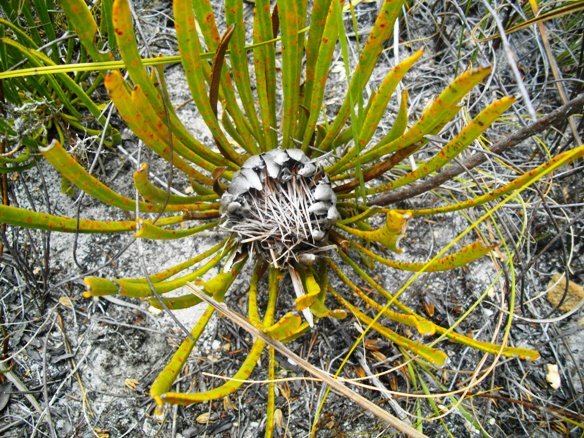Protea scabra faded flowerhead in January

Author: Ivan Lätti
Photographer: Thabo Maphisa
Some of the rhizomatous Protea species, those with underground stems, produce little more than a tuft of leaves with a flower above ground level, as does Protea scabra seen here. They may have surface stems creeping along the ground. Other proteas develop strong, erect stems as well, like P. cynaroides, doubly insured via strong sunken endowment, as well and truly counting among the ostentatiously affluent members of the Protea family, if human terms may be used.
The rhizomatous proteas have quality fire protection. They resprout from the underground parts when the coast is clear after the fire, carrying on growing with more certainty and resources than those relatives with less insurance cover.
Inequality is as prevalent among plants as among people, but without constitutional measures for "correcting" all that. Nature is too powerful for being warped by aberrations in systems fitting but one species, such as democracy.
Flowering of P. scabra is often a belated survival celebration, occurring at best two years after a fire.
From behind the dead flowerheads, such as the one in picture, axillary buds from below the leaves will grow more underground stems in the new season. This will eventually result in more leaf tufts appearing above-ground.
Seed dispersal is done by wind, after storage in the dry seedhead on the plant for a couple of years (Manning, 2007; Rourke, 1980; iNaturalist; http://protea.worldonline.co.za).

